
How Can Stiff and Tight Muscles Result In Back Pain?
Foam Rolling for Back Pain: Stiff and tight muscles are common culprits behind back pain, a prevalent issue affecting individuals worldwide. These muscle conditions can result from various factors, including poor posture, lack of exercise, prolonged sitting, or stress. When muscles in the back or related areas become tense or rigid, they can create discomfort or pain by limiting movement, straining the back's support structures, or causing imbalance.
This tension can lead to muscle pain, spasms, and fatigue, often impacting daily activities. Understanding the connection between tight, stiff muscles and back pain is crucial for effective prevention and management, highlighting the importance of maintaining muscle flexibility and strength to support spinal health.
Anatomy of Back Muscles
The human back is a complex structure supported by a network of muscles that, when strained or imbalanced, can lead to back pain.
Several key muscle groups are often implicated in this discomfort:
Erector Spinae
This group of muscles runs along the spine and then it is crucial for maintaining upright posture. Overuse, strain, or injury to these muscles can cause lower back pain and stiffness.
Latissimus Dorsi
Known as the "lats," these are large muscles in the back that support spinal alignment and movement. When tight or strained, they can contribute to back pain.
Trapezius
This muscle extends from the neck to the mid-back and shoulders. Tension and knots in the trapezius can lead to upper back and neck pain, often exacerbated by poor posture or stress.
Quadratus Lumborum
This deep muscle in the lower back is vital for stabilizing the pelvis and spine. Moreover, tight or strained can cause sharp pain in the lower back, particularly during movement.
Gluteal Muscles
Though not part of the back per se, the glute muscles interact closely with the lower back. The lower back may experience pain due to the impact of weak glutes and tight hip flexors.
Hamstrings
Tight hamstrings can pull on the pelvis, affecting the alignment of the lower back and causing pain. They are often overlooked contributors to back discomfort.
Psoas Major
This deep-seated muscle affects posture and stability. Lower back pain may lead to the misalignment of the lumbar spine due to tightness in the psoas muscle.
Core Muscles
The muscles around your abdomen and pelvis, especially the transversus abdominis, obliques, and rectus abdominis, support your spine. Weakness or lack of engagement in these muscles can contribute to lower back pain.
Causes of Muscle Stiffness and Tightness
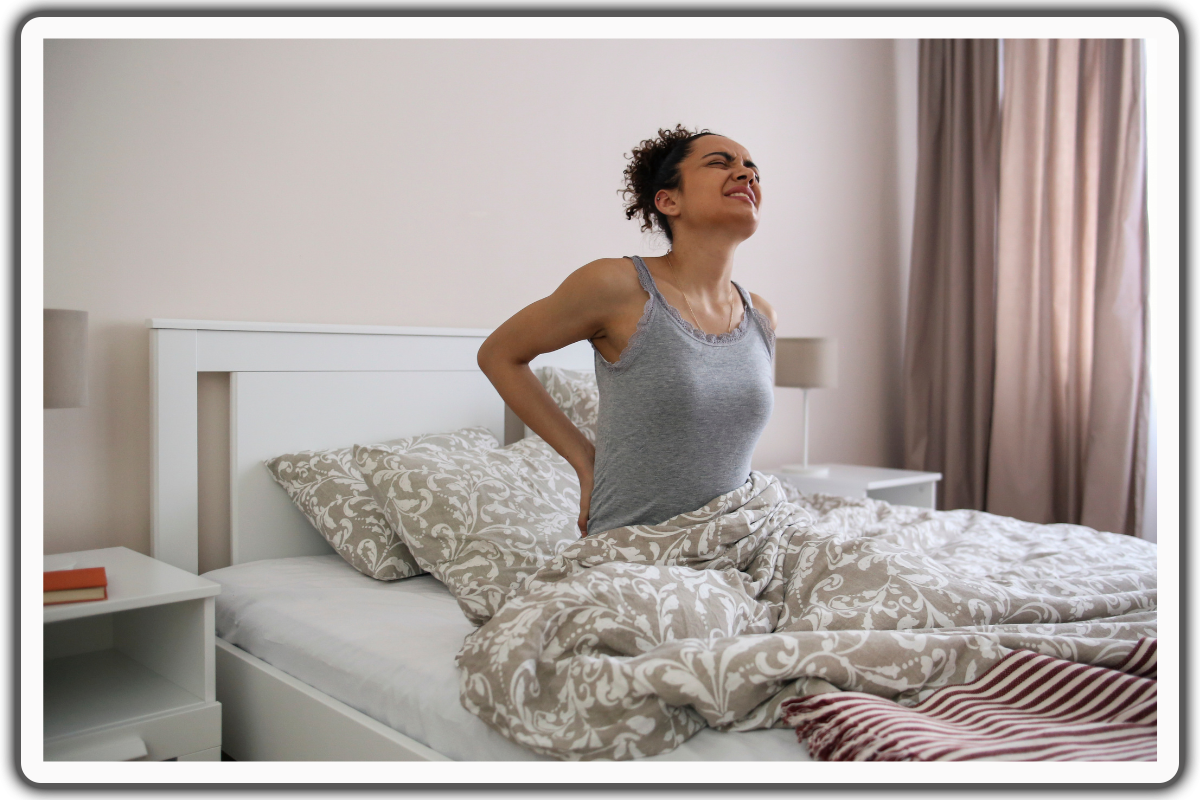
Cooling down helps to reduce muscle activity gradually and begins the recovery process, reducing the likelihood of post-exercise tightness.
Foam Rolling Exercises to Relieve Back Pain
1. Chest Opener
Lie on your back on the floor with your knees bent and then your feet flat on the floor. Place the foam roller horizontally under your mid back, lifting your upper body and maintaining good alignment with your head, shoulders, and hips. Position your hands by your ears or interlace your fingers behind your head for support. Engage your core, lower your head to the floor, and arch your spine over the foam roller, opening your chest up. Hold this position for a few seconds. After that, relax and return to the starting position. Repeat the movement as needed.
Place a pillow or blanket underneath to support your head, making this foam rolling exercise easier.
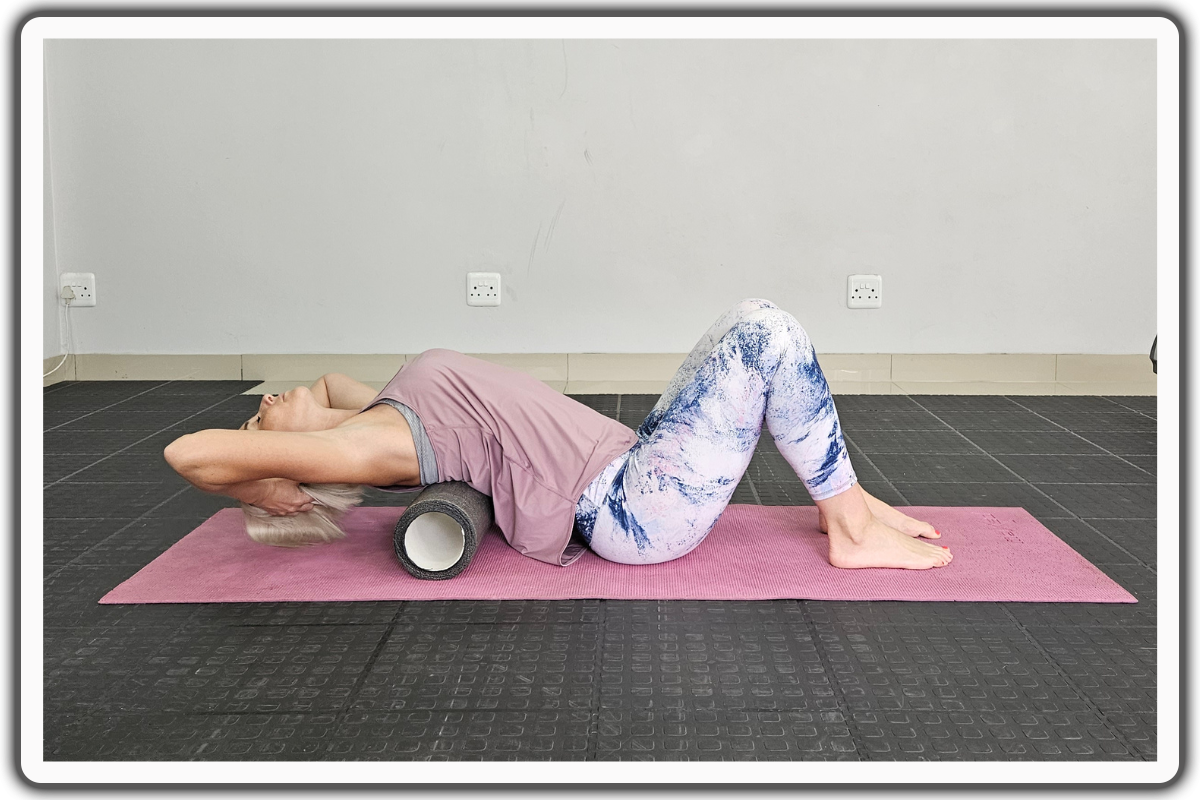
2. Thoracic Spine Roll
Basically, begin this foam rolling for back pain exercise by lying on your back on the floor with your knees bent and your feet flat on the floor. After that, place the foam roller under your upper back, lifting your upper body and maintaining good alignment with your head, shoulders, and hips. And then place your hands by your ears or interlace your fingers behind your head to support your neck. Slowly run the foam roller from your midback to the base of your neck and back, focusing on the thoracic spine area. Repeat the movement as needed.
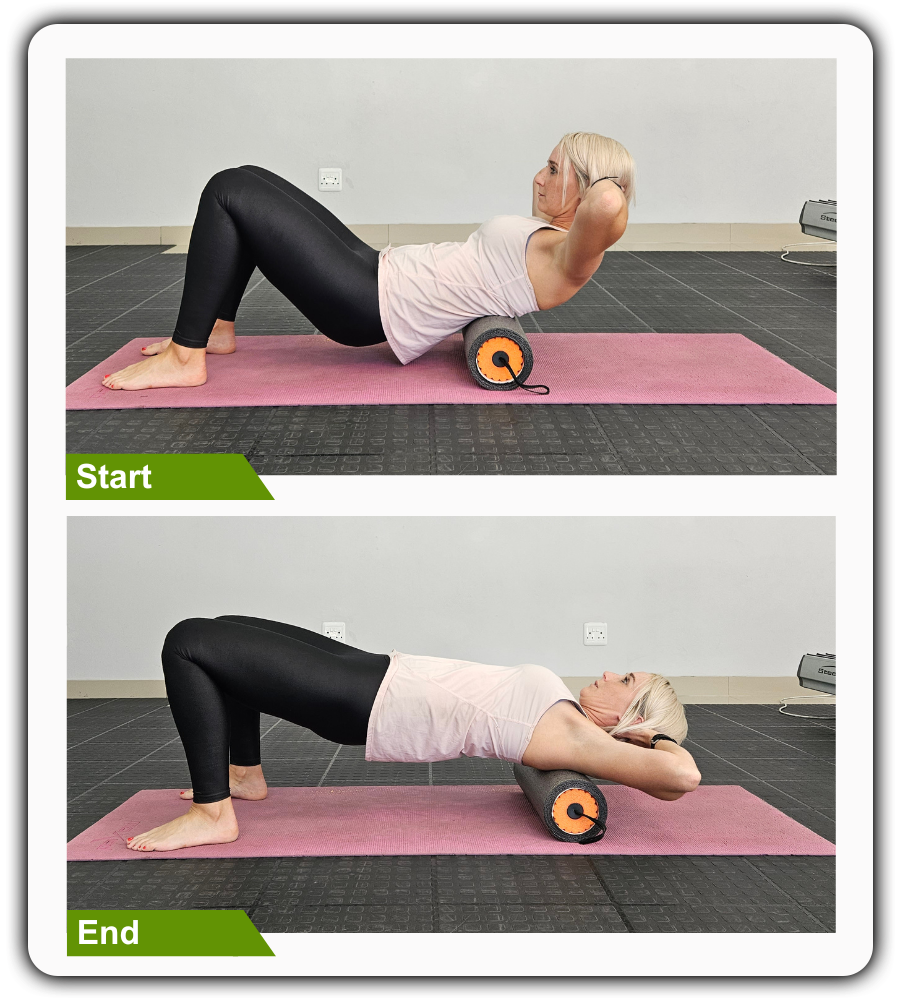
3. Latissimus Dorsi Roll
Firstly, begin this foam rolling for back pain exercise by lying on the floor with your knees bent and feet flat on the floor. After that, lift your upper body and step your left foot forward, placing the foam roller on the outer part of your back. Moreover, maintain good alignment with your head, shoulders, and hips. Therefore, engage your core and roll the foam roller from your mid back up to your armpit and back. Repeat the movement. After several repetitions, perform the movement on the opposite side.
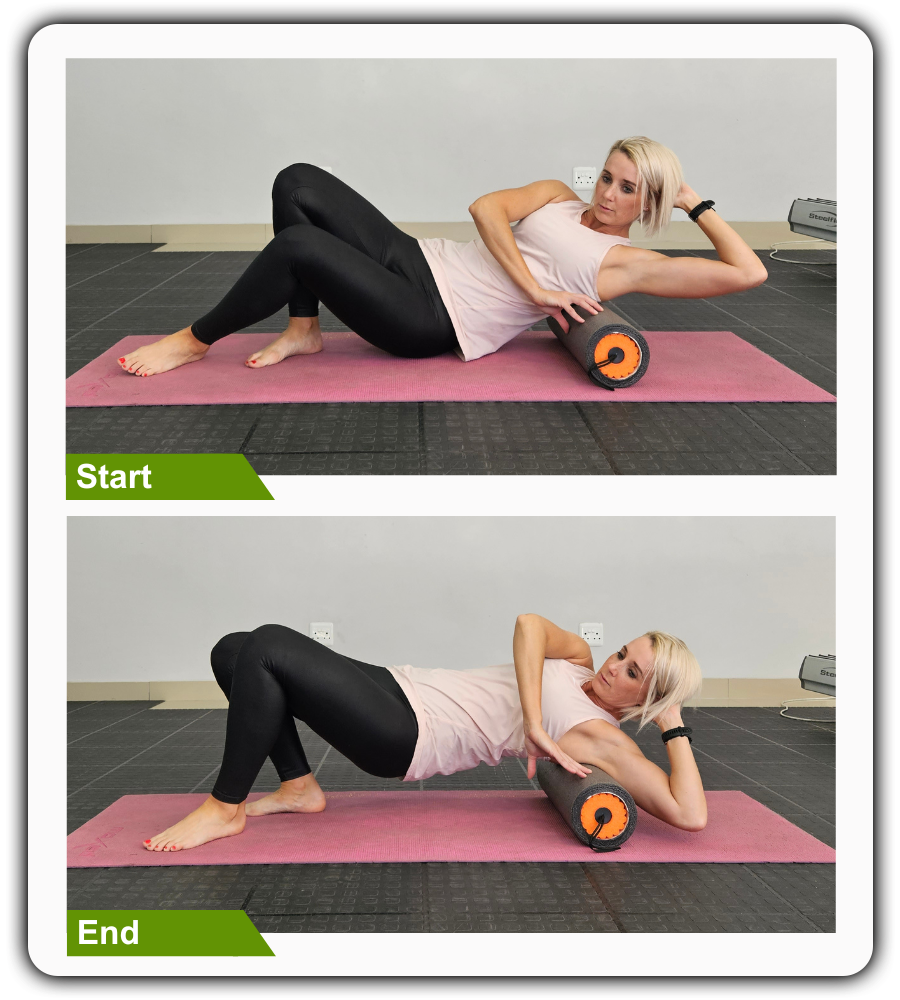
4. Glute Roll
Sit upright on the floor with your knees bent and your feet flat on the floor, maintaining good alignment with your head, shoulders, and hips. Moreover, turn your body to the left side, ideally to a 45-degree angle, and place the foam roller against the side of your glute area. After that, straighten your left leg and position your left hand behind you for support. Then engage your core and roll the foam roller from the bottom of your seat to the top and back. Repeat the movement on the opposite side.
Depending on your comfort level. ease glute muscle tightness by crossing your right leg over your left knee. Flatten your right foot on the floor, applying more pressure on the tight glute.
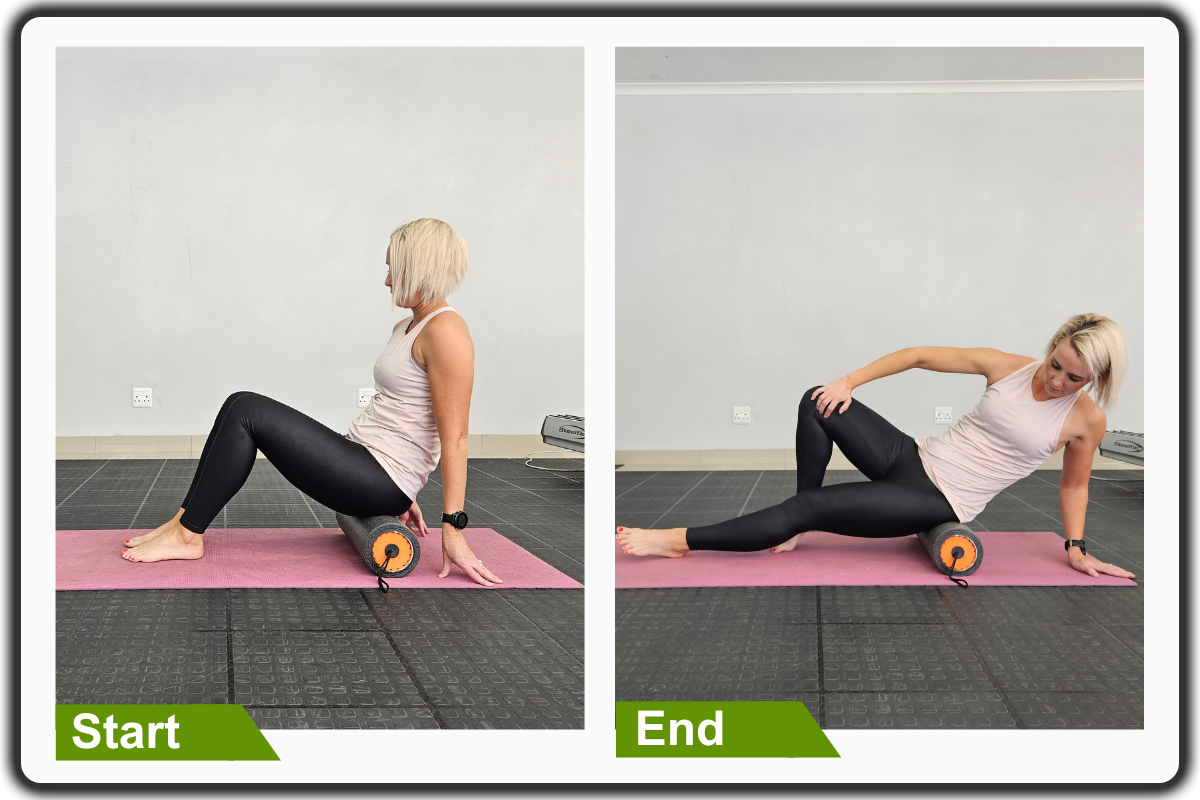
5. Hamstring Roll
Begin this foam rolling for back pain exercise by sitting upright on the floor with your legs straight and your hands at your sides for support. Moreover, place the foam roller under your hamstrings. And then straighten both arms to lift your seat off the floor, then roll the foam roller from just above your knees to the bottom of your seat and back. Lastly, complete the movement for 10 repetitions.
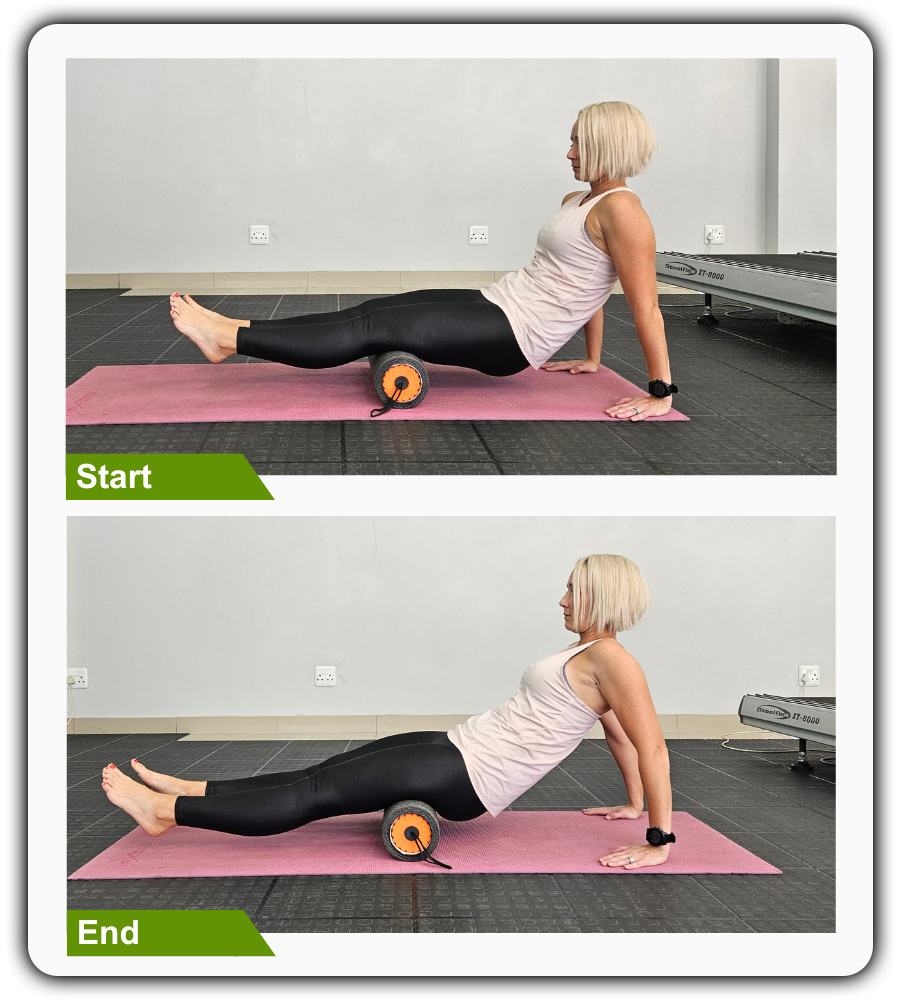
6. Iliotibial (IT) Band Roll
Sit upright on the floor, then move to one side. Straighten your bottom leg out, cross your other leg over your bottom leg, and flatten your foot on the floor. Place the foam roller under your hip. Roll from your hip, down to just above your knee and back. Relax and return to the starting position. Repeat the movement on the opposite side. Complete for 10 repetitions.
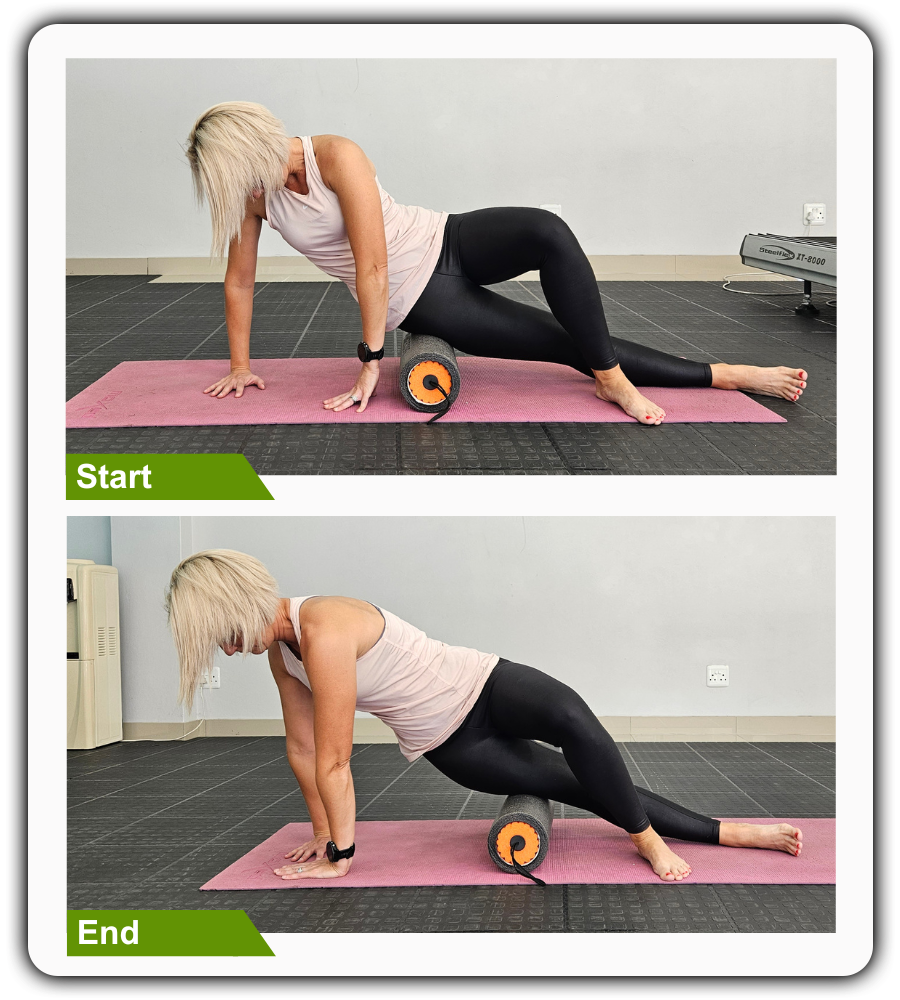
Last Words from EFI
Here's a thoughtful reminder about the intricate network of muscles in your back. These interdependent muscles work in unison to maintain your posture and support your spine. When one muscle experiences tension or imbalance, it can cascade into back pain, affecting your overall well-being.
Integrate the use of a foam roller into your routine. This tool is not just beneficial; it's transformative, aiding muscle relaxation, enhancing flexibility for mobility and proper posture, and promoting optimal blood circulation.
However, If you're experiencing tight muscles following an injury, it's essential to consult with a physical therapist. Physical therapy can offer a tailored rehabilitation program to ensure a safe and effective recovery.
By proactively engaging in such practices, you're addressing immediate discomfort and investing in your back's long-term health. It's a proactive step towards ensuring your musculoskeletal system remains robust and resilient. Embrace proactive measures to protect the health of your back, enabling you to sustain an active and pain-free lifestyle.
